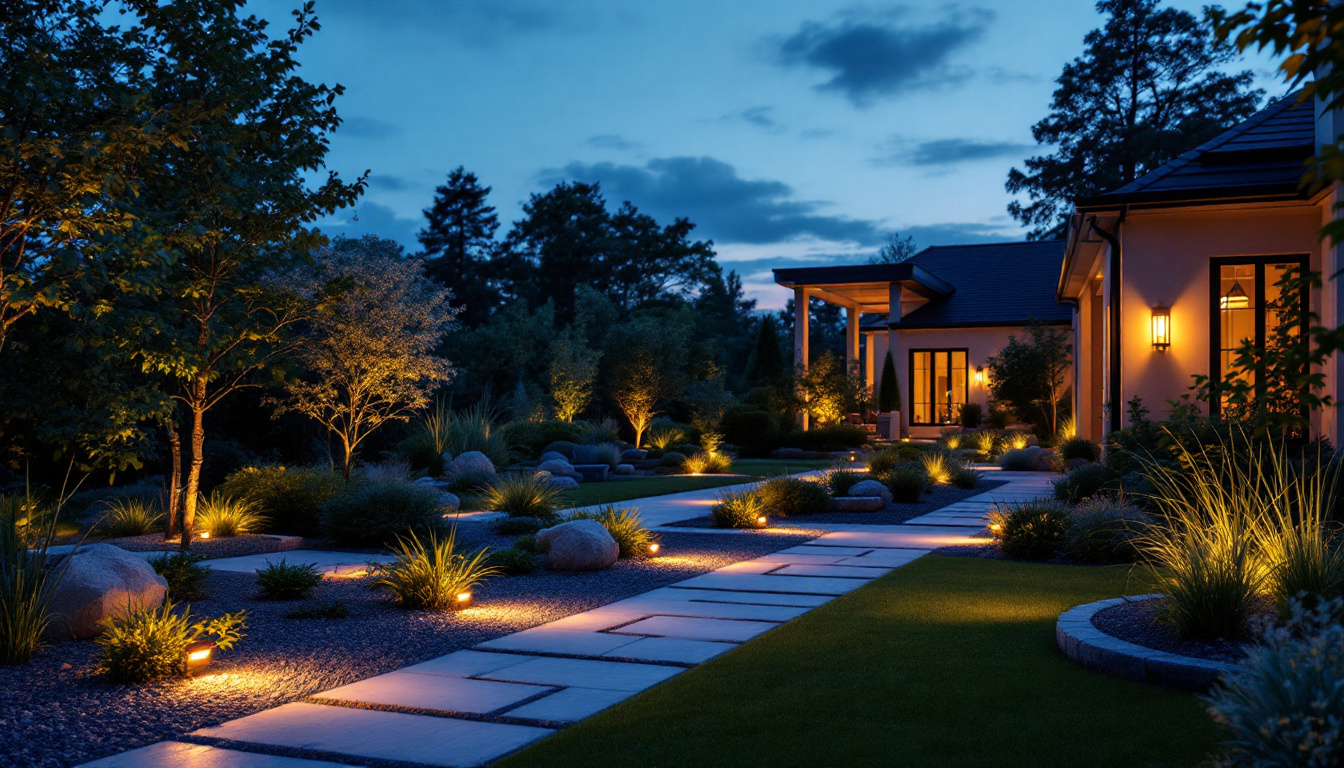
Track lighting has emerged as a versatile and stylish solution for both residential and commercial spaces. As a lighting contractor, understanding the intricacies of track lighting is essential for delivering exceptional service and meeting client expectations. This article will delve into the various aspects of track lighting that every lighting contractor should be familiar with, from its components to installation techniques and design considerations.
Before diving into installation and design, it’s crucial to grasp the fundamental components that make up track lighting systems. Familiarity with these elements will empower contractors to make informed choices and offer tailored solutions to clients.
The track itself is the backbone of any track lighting system. It typically comes in two main types: H, J, and L systems, which refer to the shape of the track and the compatibility with specific fixtures. Each type has its unique characteristics and advantages, making it essential to understand which system best suits the client’s needs.
When selecting a track system, consider factors such as the space’s layout, the desired aesthetic, and the type of fixtures that will be used. Additionally, tracks can be surface-mounted or recessed, providing further flexibility in design. Surface-mounted tracks are ideal for spaces with high ceilings or where a more industrial look is desired, while recessed tracks offer a clean, streamlined appearance that can blend seamlessly with the ceiling. Furthermore, the choice of finish—whether it be matte black, brushed nickel, or white—can significantly influence the overall ambiance of the room.
Track lighting fixtures come in various styles, from sleek and modern to more traditional designs. It’s essential to educate clients about the different types of fixtures available, including adjustable heads, pendant lights, and spotlights. Each fixture type serves a specific purpose, whether it’s to highlight artwork, provide ambient light, or create a focal point in a room.
Equally important is the choice of bulbs. LED bulbs have become increasingly popular due to their energy efficiency and long lifespan. However, contractors should also be aware of other options, such as halogen and incandescent bulbs, and their respective advantages and disadvantages. For instance, halogen bulbs can produce a warm, inviting light that is ideal for residential settings, while incandescent bulbs offer a classic glow that many homeowners still prefer. Additionally, the color temperature of the bulbs can dramatically affect the mood of a space; warmer tones can create a cozy atmosphere, while cooler tones can enhance focus and productivity in workspaces.
Understanding how to power track lighting systems is vital for a successful installation. Track lighting typically requires a dedicated circuit, and contractors should be familiar with the electrical requirements for different systems. Additionally, accessories such as connectors, end caps, and mounting hardware play a crucial role in the overall functionality and appearance of the installation.
It’s also worth noting that some systems allow for dimming capabilities, which can enhance the versatility of the lighting setup. Educating clients about these options can lead to more satisfied customers and referrals. Beyond dimmers, smart lighting technology is becoming increasingly popular, allowing users to control their track lighting via smartphone apps or voice commands. This integration not only adds convenience but also opens up new possibilities for customizing lighting scenes that can adapt to various activities throughout the day, from bright task lighting during work hours to soft, ambient lighting for evening relaxation.
Proper installation is key to ensuring the longevity and effectiveness of track lighting systems. As a lighting contractor, mastering installation techniques will set you apart in the industry.
Before installation begins, it’s essential to plan the layout of the track lighting. This involves considering the room’s dimensions, the purpose of the lighting, and the placement of furniture and decor. A well-thought-out layout maximizes the lighting’s effectiveness and ensures an aesthetically pleasing result.
Using tools like laser levels and measuring tapes can help achieve precise placements. Additionally, sketching out the proposed layout can provide a visual guide during installation, reducing the likelihood of mistakes. It’s also beneficial to consider the type of lighting fixtures that will be used on the track, as different styles can create varying atmospheres. For instance, adjustable spotlights can highlight artwork or architectural features, while pendant lights can add a touch of elegance over dining areas. Taking the time to visualize how the lighting interacts with the space can lead to a more harmonious design.
Once the layout is finalized, the next step is mounting the track. This process involves securing the track to the ceiling or wall, ensuring it is level and properly aligned. Depending on the type of track system, different mounting techniques may be required.
For surface-mounted tracks, using anchors and screws is common, while recessed tracks may require more specialized installation techniques. Always follow the manufacturer’s guidelines to ensure safety and compliance with local building codes. Additionally, it’s important to consider the weight of the fixtures that will be attached to the track; heavier fixtures may require additional support to prevent sagging or detachment over time. Ensuring that the track is securely mounted not only enhances the aesthetics but also guarantees the safety of the installation, providing peace of mind for both the contractor and the client.
Connecting the electrical supply to the track lighting system is a critical step that requires precision and safety. Contractors must ensure that the power supply is turned off before beginning any electrical work. Understanding the wiring requirements for different track systems is essential, as improper connections can lead to malfunction or safety hazards.
Once the connections are made, it’s crucial to test the system before finalizing the installation. This ensures that all fixtures are functioning correctly and that the lighting meets the client’s expectations. Moreover, it’s advisable to educate clients on the operation of their new lighting system, including how to adjust the fixtures and replace bulbs. Providing this knowledge not only enhances customer satisfaction but also empowers clients to make the most of their track lighting, allowing them to create the desired ambiance in their space. Additionally, discussing energy-efficient bulb options can lead to long-term savings on electricity bills, making the installation not just a functional upgrade but also a smart investment for the future.
Track lighting is not just about functionality; it also plays a significant role in the overall design of a space. As a lighting contractor, understanding design principles will help you create visually appealing and effective lighting solutions.
One of the key advantages of track lighting is its ability to highlight architectural features within a space. Whether it’s a unique ceiling design, artwork, or decorative elements, strategically placed track lighting can draw attention to these features, enhancing the overall aesthetic.
When designing a lighting layout, consider the angles and positions of fixtures to achieve the desired effect. Adjustable fixtures can be particularly useful in this regard, allowing for flexibility in directing light where it’s needed most.
Track lighting can also be used to create different moods and atmospheres within a space. By combining various fixtures and bulb types, contractors can help clients achieve the perfect ambiance for any occasion. For instance, warm-toned bulbs can create a cozy atmosphere, while cooler tones can lend a more modern and vibrant feel.
Additionally, incorporating dimmers into the design allows clients to adjust the lighting intensity based on their preferences and activities, further enhancing the versatility of the system.
Track lighting should not be viewed in isolation; instead, it should complement other lighting solutions within a space. As a contractor, understanding how to integrate track lighting with ambient, task, and accent lighting can lead to a more cohesive and functional design.
For example, combining track lighting with recessed lighting can provide a layered lighting effect, offering both general illumination and targeted lighting for specific tasks or areas. Educating clients on the benefits of a multi-layered approach can elevate their overall satisfaction with the final result.
Providing clients with a simple maintenance checklist can empower them to take an active role in caring for their lighting systems, leading to better performance and satisfaction.
Despite proper installation and maintenance, issues may still arise. Common problems include flickering lights, dead bulbs, or uneven lighting. As a contractor, being equipped with troubleshooting strategies can save time and enhance client satisfaction.
For example, if a fixture is flickering, it may indicate a loose connection or a faulty bulb. Educating clients on how to identify and resolve these issues can foster a sense of confidence in your expertise and services.
Track lighting is a dynamic and effective lighting solution that offers both functionality and aesthetic appeal. As a lighting contractor, understanding the components, installation techniques, design considerations, and maintenance practices associated with track lighting is essential for delivering high-quality service to clients.
By staying informed about the latest trends and technologies in track lighting, you can position yourself as a knowledgeable and reliable contractor in the industry. Embrace the versatility of track lighting, and you’ll be well-equipped to meet the diverse needs of your clients, ensuring their spaces are beautifully illuminated and functional.
Ready to elevate your track lighting installations with the best products on the market? Look no further than LumenWholesale for all your lighting needs. We provide contractors with high-quality, specification-grade lighting products at unbeatable wholesale prices. By cutting out the middleman, we ensure you don’t pay inflated markups, giving you access to superior lighting products that meet the highest industry standards. With our hassle-free bulk buying and free shipping, you can stock up on reliable, high-performance lighting and save on every project. Discover the ideal combination of quality, affordability, and convenience at LumenWholesale — your source for Wholesale Lighting at the Best Value.

Discover the essential checklist for lighting contractors when selecting low voltage LED landscape flood lights.

Discover expert tips and exclusive deals on ceiling fans tailored for lighting contractors.

Discover how floodlights are revolutionizing the lighting industry by enhancing efficiency for contractors.

Discover why solar gate lights are becoming a must-have for lighting contractors.